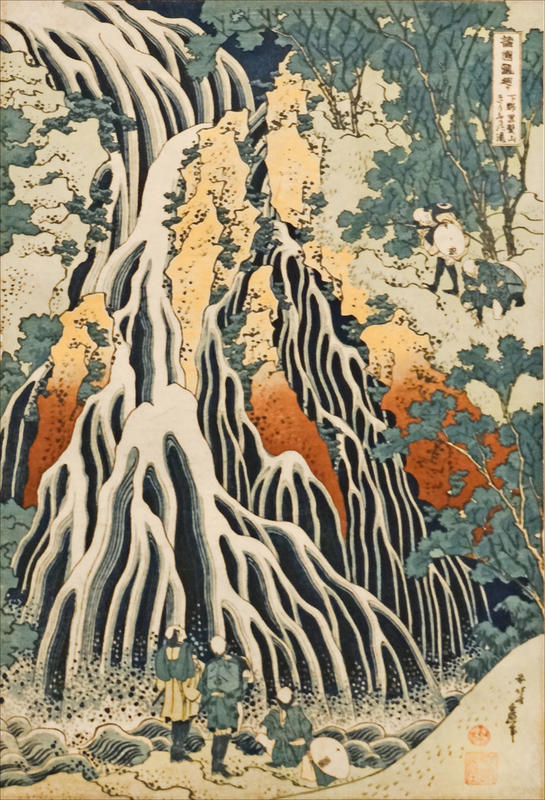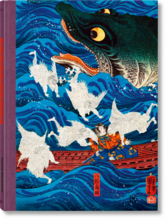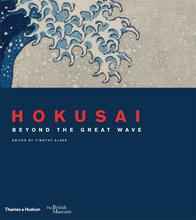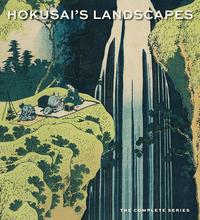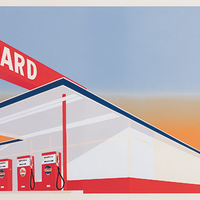More about A Tour of the Waterfalls of the Provinces: The Falling Mist Waterfall at Mount Kurokami in Shimotsuke Province
- All
- Info
- Shop

Contributor
This famed waterfall at Mount Kurokami (or Mount “Raven Locks”) was known for its craggy, fragmented cascades and the chilling mist that they produced.
You can count five tiny bald men (no raven locks there) admiring the waterfall’s formidable majesty and scrambling up its slope. But the humans are merely for scale. Hokusai’s emphasis was on the arresting and mighty beauty of nature. This had to do with his Shinto beliefs, which honored the spirits that dwelled within natural entities (geology, flora, and water) and celebrated nature’s spiritual harmony. He found waterfalls to be sacred places, and was inspired to make an 8-piece series of prints paying homage to Japan’s splashiest spots.
The Tour of Waterfalls in Various Provinces series is an exemplary use of the newfangled “Prussian blue” ink. Prussian blue was developed in the early 1700s by a hapless alchemist in Berlin, who had intended to mix red pigment and, by a serendipitous turn of events, ended up with a very high-quality blue. This might not sound like a big deal, but until this time blue had been a highly tricky color for artists to get right. Most blue inks and paints were derived from natural dyes that faded over time, or from pricey imported sources like lapis lazuli. Now, with a widely-producible recipe, alchemists everywhere could cook up a good, lasting blue for artists around the world. (And, when you mix Prussian blue with sulphuric acid, you get...cyanide! So murderers everywhere were also pleased.) By the 1800s, this miraculous blue had revolutionized Japanese printmaking, making serene Edo landscapes ever-more vibrant (and archival, luckily for us in the 21st century).
Hokusai signed many of his prints with the moniker “The Old Man Mad for Drawing,” because he whipped up over 30,000 sketches in his lifetime.
Sources
- “Kirifuri Waterfall on Mount Kurokami in Shimotsuke Province.” Honolulu Museum of Art. 2014. Accessed December 22, 2017. http://honolulumuseum.org/art/8989
- “Learning from Asian Art: Japan.” Philadelphia Museum of Art. Accessed December 22, 2017. http://www.philamuseum.org/booklets/4_25_19_0.html
- McCouat, Philip. “Prussian Blue and Its Partner in Crime.” Journal of Art in Society. 2014. Accessed December 22, 2017. http://www.artinsociety.com/prussian-blue-and-its-partner-in-crime.html
- Nasar, Seyyed Hossein. “Religion and the Order of Nature.” Oxford University Press. 1996. P.33. https://books.google.com/books?id=hfp-v1DiXm8C&pg=PA33&dq=shintoism+nat…
- Walker, Lee Jay. “Spirituality of Mountain Art in Japan: Buddhism, Shintoism, and Contemplation.” Modern Tokyo Times. February 17, 2017. Accessed December 23, 2017. https://moderntokyonews.com/2017/02/17/spirituality-of-mountain-art-in-…

